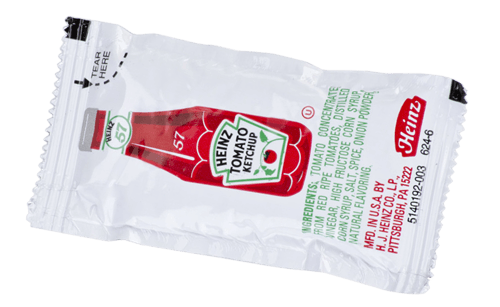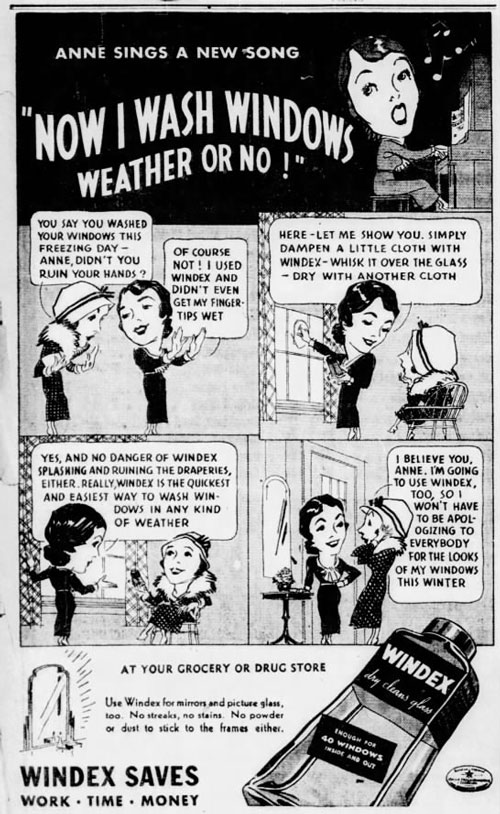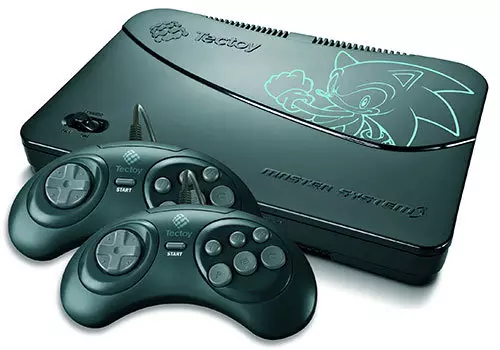Manufactured Gloss
Our continuing journey to write a Tedium glossary takes us through the manufacturing process—and the weird products it sometimes led to.
Run a business? You can do better than a P.O. Box. Check out Stable, a virtual mailbox that can give you a permanent address worth keeping, while digitizing your mail so you’re not stuck with an analog process for your digital business. Sign up today and get 20% off in the first year.
The Glossary of Tedium, vol. 4: Manufactured Goods
Our world is full of static objects. Those static objects required ingenuity, and are often not particularly obvious in nature.
Sometimes, these goods were developed by one thoughtful inventor; sometimes, they came about after months or even years of work, or even an accidental observation that led to a much more successful business than had originally been intended.
This addition to the Tedium glossary covers the gamut of odd objects; a little food, a little technology, a lot of hard manufacturing, and even a little retail.
And surprisingly, I got another batch of 26 out of this, one for each letter of the alphabet! Anyway, here’s the list:
Adams Manufacturing
A major manufacturer of suction cups, which launched as a result of Adams being stuck with a bunch of suction cups because of of his prior products failed. He decided to sell the suction cups instead, and after winning over a few major clients, they ended up selling 50 million of them per year.
Bonanza steak
A cut of beef, first uncovered by meat scientist Amilton de Mello of the University of Nevada, Reno. The beef cut, one of the most prominent examples of meat science, highlights how clever cuts of beef can help make cows more valuable for ranchers by allowing the beef to be processed in a more lucrative way.

A Cherry MX Brown switch. (via Cherry’s website)
Cherry Manufacturing
A prominent creator of microswitches founded in Illinois in the 1950s. The company’s high-quality switches were well known by the 1960s, but they would not truly go mainstream until the 2010s, when Cherry keyswitches became the de facto standard for mechanical keyboards. By that point Cherry had morphed enough that it was primarily a German company.
Dry-footing
A process used in the creation of many types of ceramics, particularly cups and plates, to create a matte section of the design that can then be properly placed on a surface without sliding. The reason it exists is simple—if it wasn’t there, the dish would stick to the kiln.
Enamel
A common coating for metal, glass, and other surfaces to give them a smooth finish. Commonly used these days for both whiteboards and chalkboards—although with some differences in the enamel makeup for each object.
Fabrikoid
An early type of pleather, sold by the DuPont chemical company, that found early success as a covering for vehicles. DuPont actually bought the company that sold it, but then greatly improved it with the help of the company’s chemists. At the time, DuPont’s big play was a manual called “Farming With Dynamite.”
Generic brands
Also known as private-label brands, these refer to products manufactured and sold by retailers under a store brand, competing directly with companies that sell under a better-known brand name.

Heinz ketchup packets
An early type of sauce packet, first offered in 1968, that became highly prevalent thanks to the rise of fast food. The packets are extremely popular and widely used, but major companies have been known to drop the packets, most notably McDonald’s.
Irradiated polyethylene
A type of plastic that was found to have the ability to easily “shrink” when heated, a discovery that led to the invention of shrink wrap. Notably, the process was first used to wrap frozen turkeys. Closely related to heat shrink, a technology used in wiring.
JanSport
A major manufacturer of backpacks, and the firm arguably most responsible for mainstreaming backpacks beyond outdoor settings. The company was named after Jan Lewis, the girlfriend of the backpack’s designer Murray Pletz. Lewis knew how to say; Pletz promised to name the backpack after her, and marry her, if she helped him. She did, and while the marriage didn’t last, the name (and brand) did.
Kärcher
A major manufacturer of high-pressure washers, whose founder Alfred Kärcher created the first modern design for the category in 1950. The devices were a significant upgrade from the steam pressure washers used previously.
Look for the Union Label
The name of a song, created by the International Ladies Garment Workers’ Union, that encouraged the public to buy union-made clothing. The plea ultimately fell on deaf ears, sadly, as the clothing industry globalized, shattering the unions’ staying power.
MSRP
The manufacturer’s suggested retail price, a common term used by manufacturers to set prices for products sent to retailers, who pay wholesale prices for the goods. Retailers tend to ignore MSRP today.
Nylon
A form of fabric, essentially a man-made take on silk, developed by DuPont in the 1930s. Notably, nylon led to another invention—Velcro, also known hook & loop, that was also an attempt to build a man-made equivalent to a natural phenomenon. More recently, nylon has been a key element in the braiding used on charging cables.
Off-market retailers
An industry name for low-cost discount retailers like Burlington Coat Factory or Marshalls that sell overstocked or liquidated goods, often at significantly lower prices than the original products first sold for. The model has found success in part because it allows manufacturers to make back some portion of their money from the good, which would otherwise go into the trash.

A 1935 Windex ad. The product, after its 1933 invention, took a couple of years to get to market. (The Courier-Journal)
Philip W. Drackett Company
The company responsible for two of the most popular types of home chemicals—Drano and Windex. The products allowed Drackett, previously a manufacturer of industrial chemicals, to service the consumer market. The company was eventually sold, first to Bristol-Myers in 1965 and S.C. Johnson in 1992.
Quantum tunneling
A concept referring to a low level of energy transfer. With the right amount of energy, a particle can continue to travel through the barrier. This highly technical concept is the basis for the rewritable flash storage, which was first developed by Sandisk cofounder Eli Harari starting in the 1970s.
Rocket Chemical Company
The company that developed the popular WD-40 chemical spray, which was initially intended to prevent rust, but gained a reputation as a lubrication chemical. It was intended for the aerospace industry at first but it found success on the open market starting in the 1950s.
Sealant
A term, sometimes used synonymously with caulk, describing a substance used to block fluids from passing through openings. Sealants are often placed on a given surface with the help of a caulking gun.

Tectoy
A manufacturer of Brazilian electronics, usually toys, that has leveraged an unusual market position to keep the Sega Master System on sale long past its sell-by date in other markets. Tectoy is a local manufacturer of Sega products, allowing its goods to avoid expensive import duties—but since Sega has largely stopped making consoles, the company finds itself continuing to sell new versions of the Master System, even today.
Universal remote
A device that first became common in the late 1980s to control different types of electronics with a single remote. A number of manufacturers developed these devices, which leveraged the then-new infrared technology many television sets supported, with Magnavox nailing the winning model. Notably, Steve Wozniak tried to compete in this market as his follow-up to Apple.
Vestigial manufacturing
A term that we invented to describe products that, for one reason or another, have elements that sit unused, whether it’s a button that’s covered up or a USB port that has no functional use to consumers.
Waveguide
The name of the audio technology developed by Dr. Amar Bose and Dr. William Short. The technology, essentially a serpentine-shaped plastic chamber, made it possible to get better sounds out of smaller spaces, and became the basis of the popular Bose Wave audio systems often sold throughout the ’80s and ’90s.
Xerography
The term used to describe the dry photocopying process invented by Xerox founder Chester Carlson. The process, which mixed toner and heat, became one of the most important discoveries of the 20th century, as it ultimately made it trivial to reproduce documents. Earlier attempts required complex manual processes.
/uploads/Yikes-Pencils.jpg)
Yikes!
A kind of pencil manufactured in the early 1990s that found popularity among students. The concept of the pencils was simply to manufacture wood pencils that didn’t look like wood, something the pencil manufacturer Empire Berol did with the help of compressed particle board. Despite the unusual look initially drawing attention, the pencils turned out to be a major fad, in part because they weren’t particularly good at being pencils.
Zipper binder
A form of three-ring binder that is held together by a large zipper on the side, most notably sold under the Five Star brand name. According to ACCO Brands, a big reason Trapper Keepers no longer sell very well is that people use zipper binders instead—which it fortunately manufactures.
While not wanting to overplay this point, we talk a lot about the failures of capitalism—and to be fair, there are many—but not much about its success stories.
In many ways, having a profit motive led most of these inventions into existence, driving creativity and ingenuity that we collectively benefited from for generations. Sure, some of these innovations weren’t the greatest. Some were just minor stepping stones on the long journey of life.
I don’t expect many people, besides me, to write thousands of words discussing why braided nylon is such an important part of our charging cables, for example.
But as a society, we have clearly gained much from these things that other people have developed that we can directly benefit from. I hope, as we consider all the negative parts of late-stage capitalism, we don’t forget the spirit of creativity that often has benefited from that spirit of capitalism.
(Maybe we can do it with a few less billionaires.)
--
Find this one an interesting read? Share it with a pal!
And we’ll see you with more Tedium next week!
» Check out today’s sponsor: Fix your startup’s snail mail problems once and for all—get a virtual mailbox. Check out today’s sponsor Stable to learn more.
:format(jpeg)/uploads/tedium060323.gif)
/uploads/tedium060323.gif)


/uploads/ernie_crop.jpg)